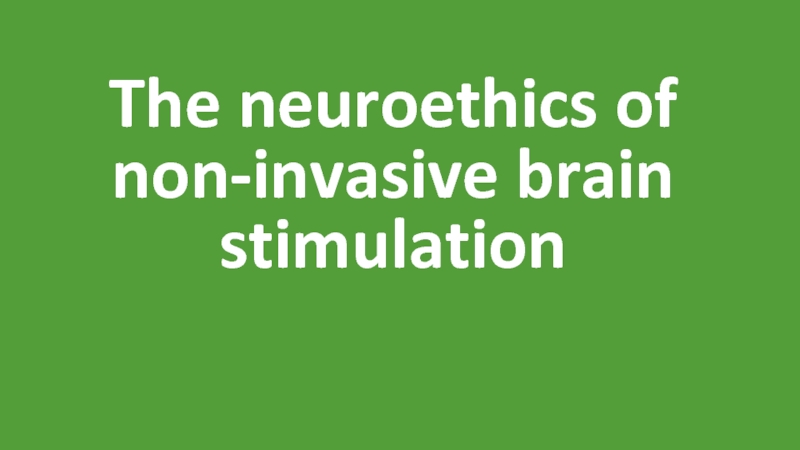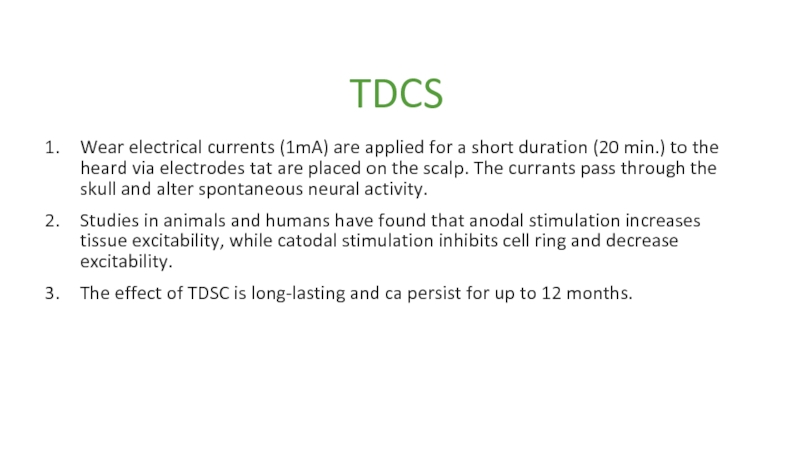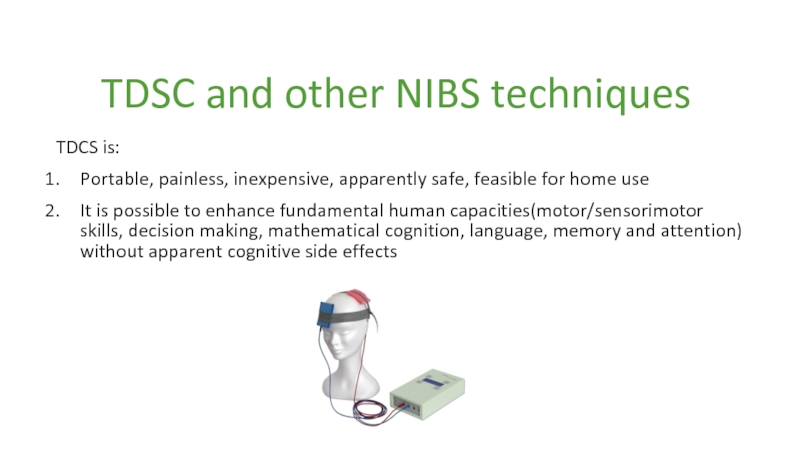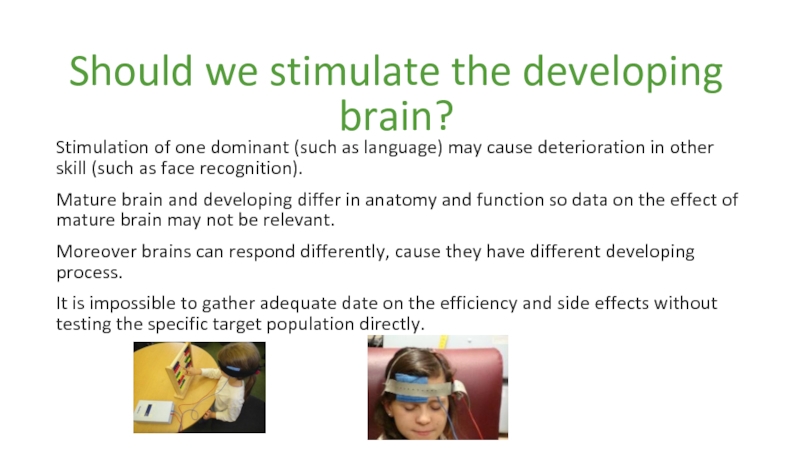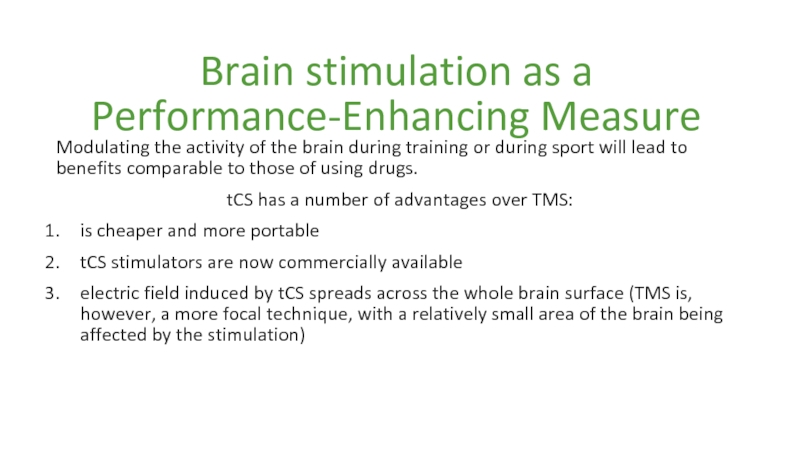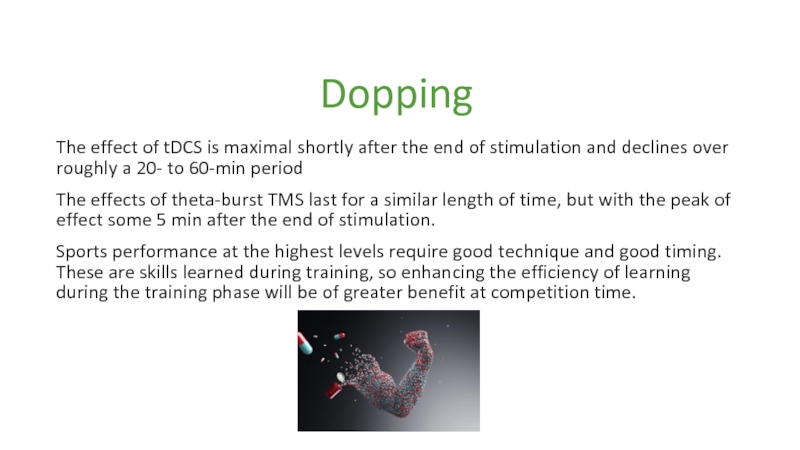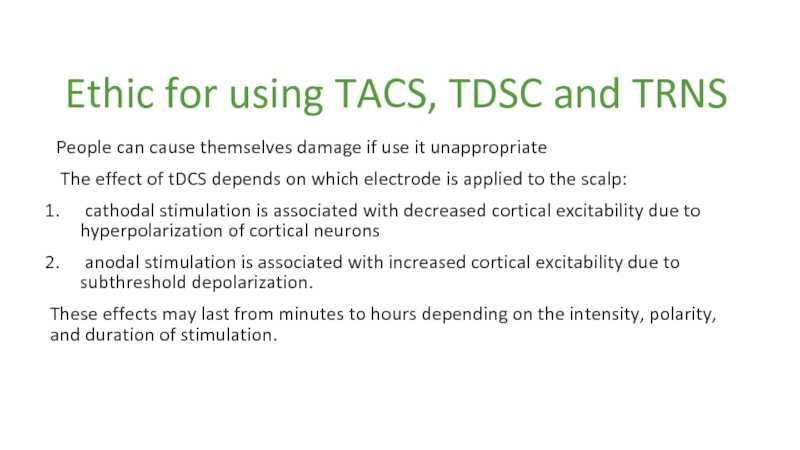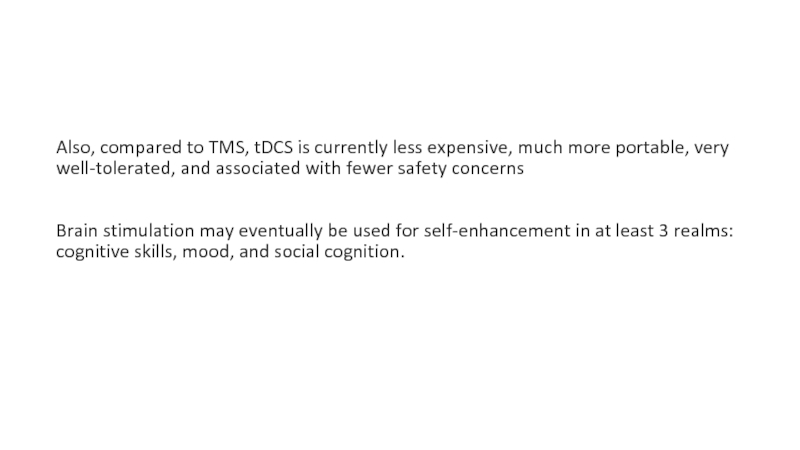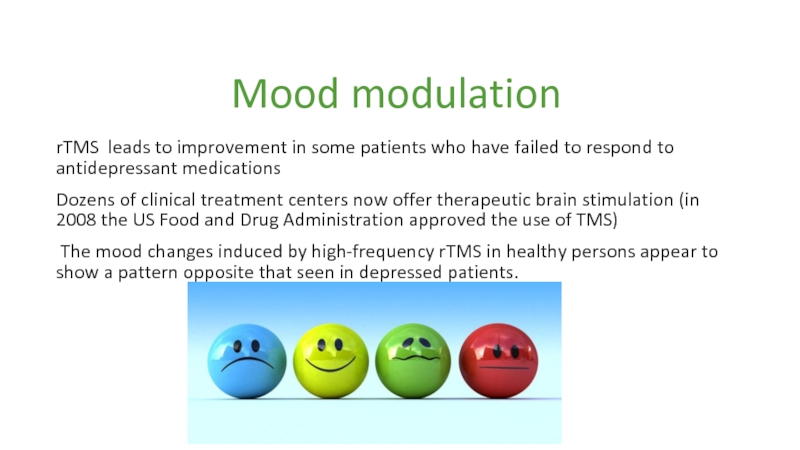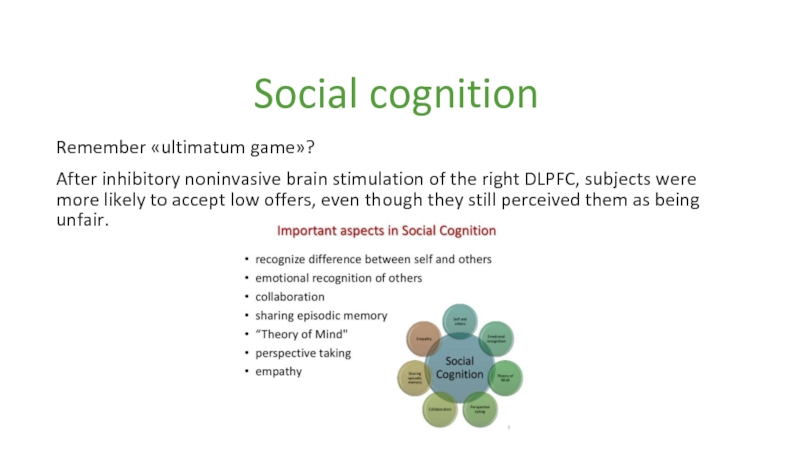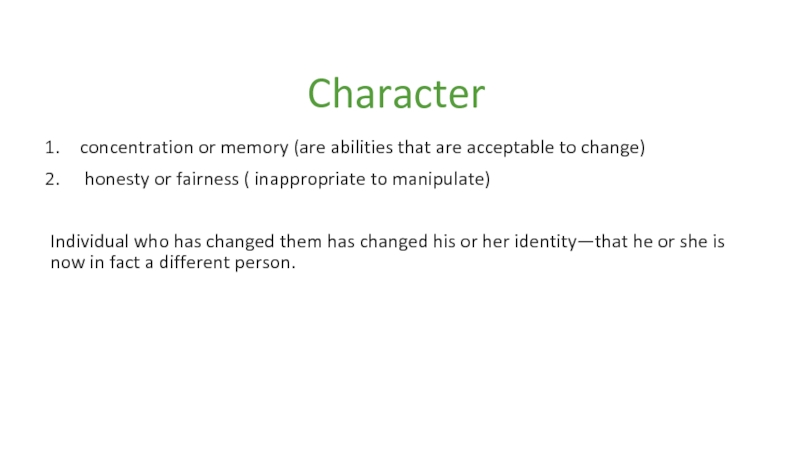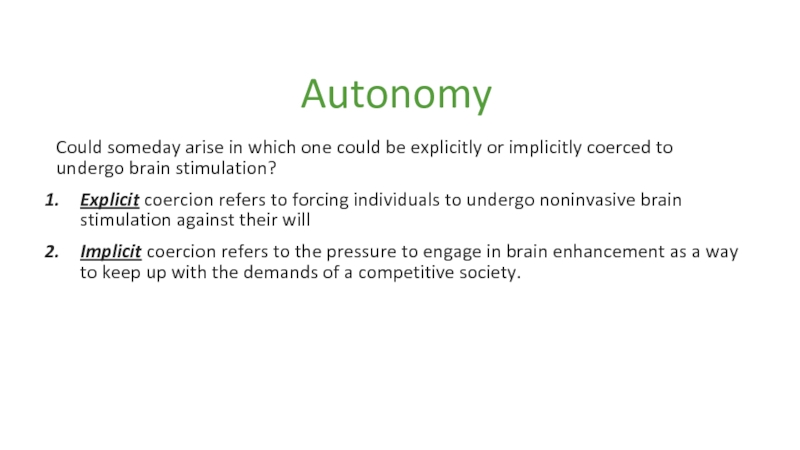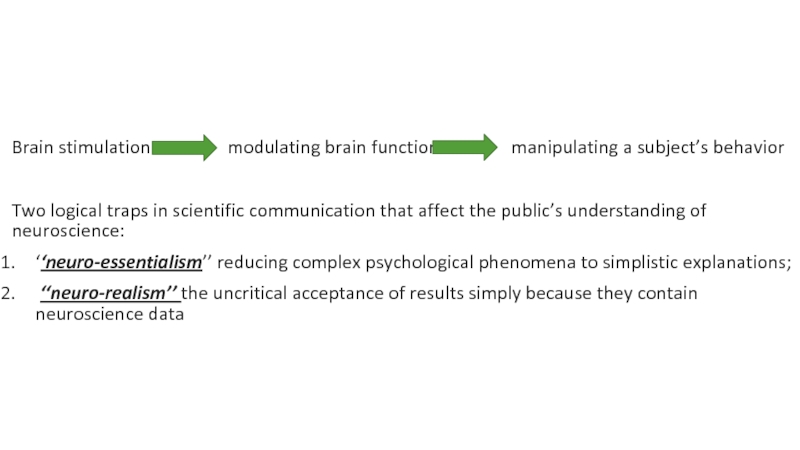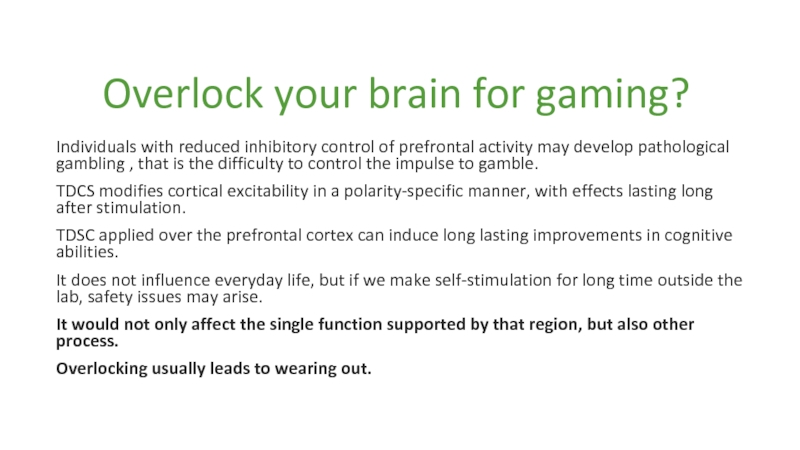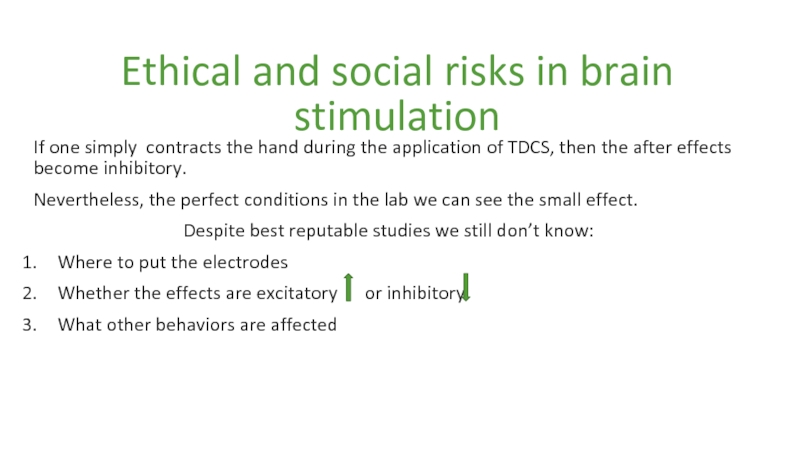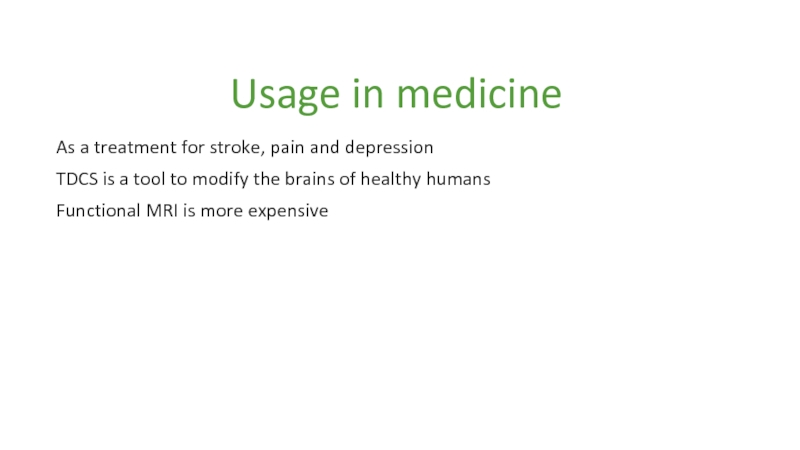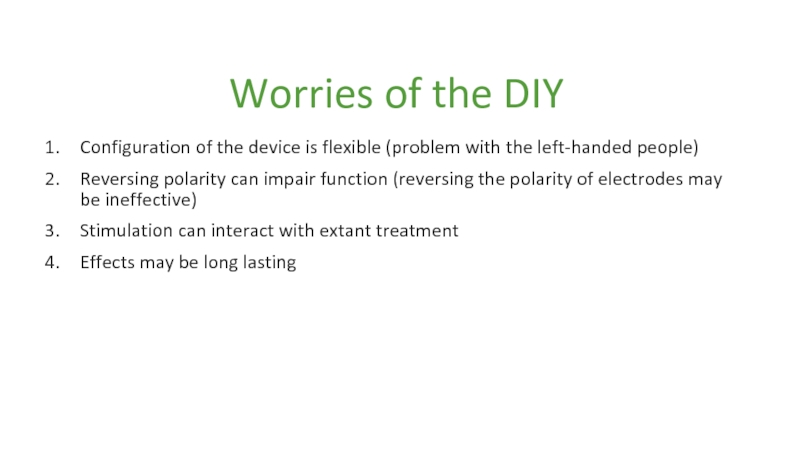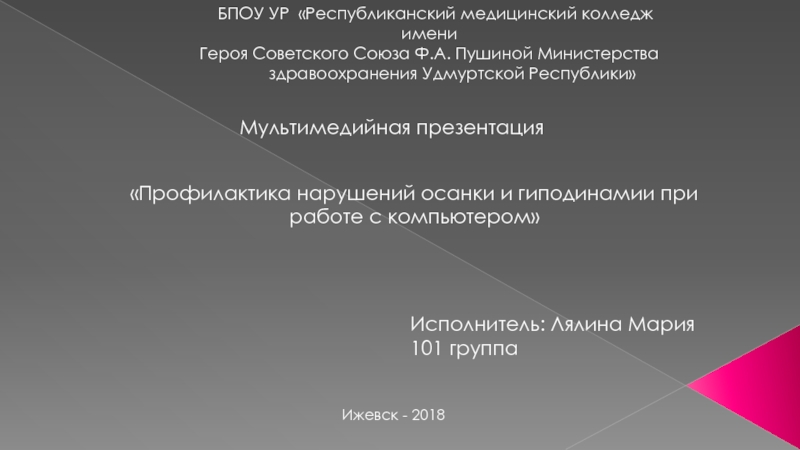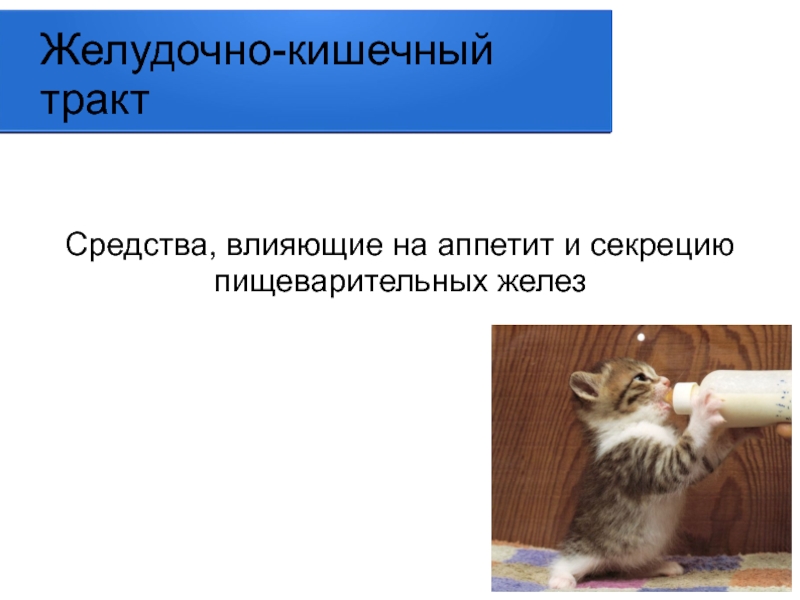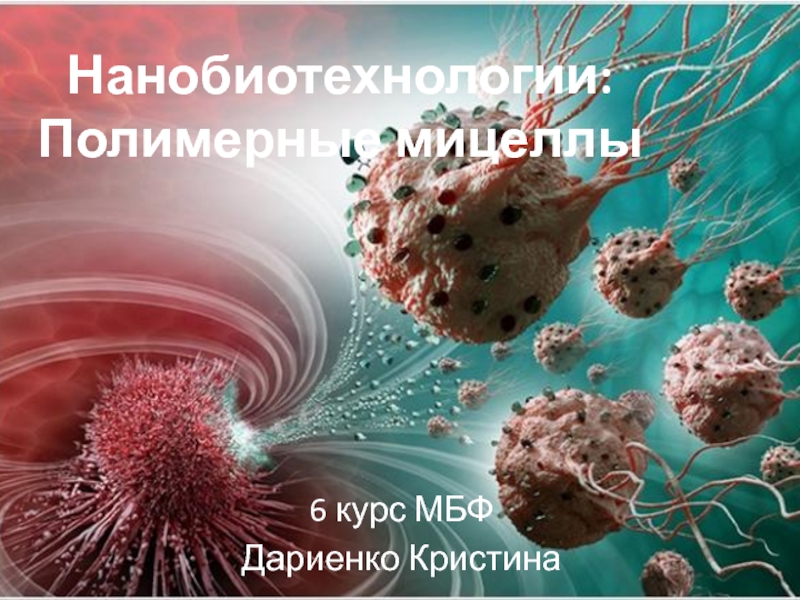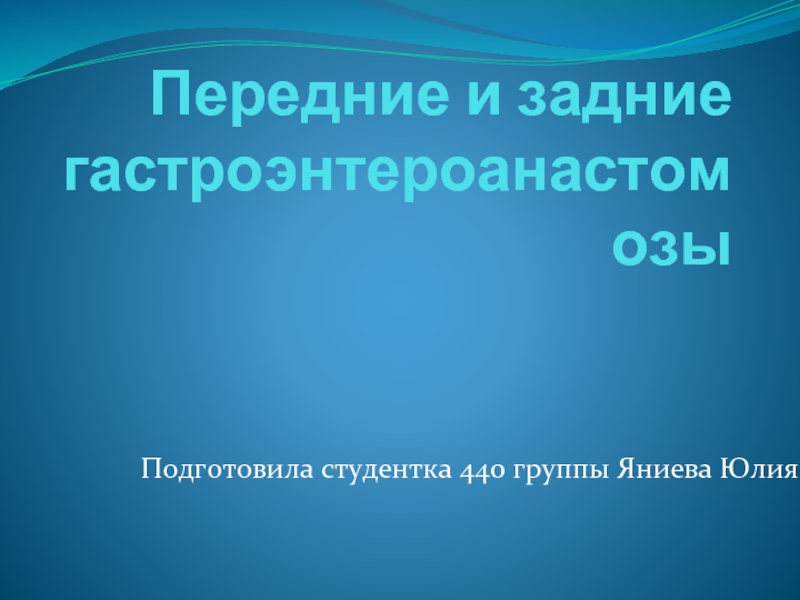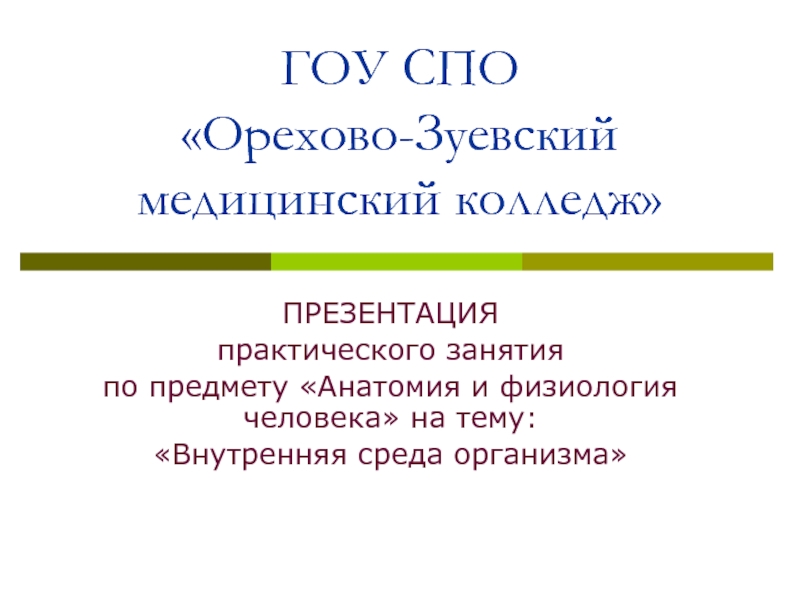- Главная
- Разное
- Дизайн
- Бизнес и предпринимательство
- Аналитика
- Образование
- Развлечения
- Красота и здоровье
- Финансы
- Государство
- Путешествия
- Спорт
- Недвижимость
- Армия
- Графика
- Культурология
- Еда и кулинария
- Лингвистика
- Английский язык
- Астрономия
- Алгебра
- Биология
- География
- Детские презентации
- Информатика
- История
- Литература
- Маркетинг
- Математика
- Медицина
- Менеджмент
- Музыка
- МХК
- Немецкий язык
- ОБЖ
- Обществознание
- Окружающий мир
- Педагогика
- Русский язык
- Технология
- Физика
- Философия
- Химия
- Шаблоны, картинки для презентаций
- Экология
- Экономика
- Юриспруденция
The neuroethics of non-invasive brain stimulation презентация
Содержание
- 1. The neuroethics of non-invasive brain stimulation
- 2. TDCS Wear electrical currents (1mA) are applied
- 3. TDSC and other NIBS techniques TDCS is:
- 4. Should we stimulate the developing brain? Stimulation
- 5. Brain stimulation as a Performance-Enhancing Measure Modulating
- 6. Dopping The effect of tDCS is maximal
- 7. Detection There is no known way to
- 8. Ethic for using TACS, TDSC and TRNS
- 9. Also, compared to TMS, tDCS is
- 10. Cognitive skills TMS and tDCS of language-related
- 11. Mood modulation rTMS leads to improvement in
- 12. Social cognition Remember «ultimatum game»? After inhibitory
- 13. Safety The most important safety risk associated
- 14. Character concentration or memory (are abilities that
- 15. Justice The distinction between rich and poor.
- 16. Autonomy Could someday arise in which one
- 17. Brain stimulation
- 18. Many ‘‘neuromarketing’’ companies are selling fMRI
- 19. Putting aside the low potential for
- 20. Deceptive behavior In one study, TMS was
- 21. Overlock your brain for gaming? Individuals with
- 22. Ethical and social risks in brain stimulation
- 23. Usage in medicine As a treatment for
- 24. Worries of the DIY Configuration of the
Слайд 2TDCS
Wear electrical currents (1mA) are applied for a short duration (20
min.) to the heard via electrodes tat are placed on the scalp. The currants pass through the skull and alter spontaneous neural activity.
Studies in animals and humans have found that anodal stimulation increases tissue excitability, while catodal stimulation inhibits cell ring and decrease excitability.
The effect of TDSC is long-lasting and ca persist for up to 12 months.
Studies in animals and humans have found that anodal stimulation increases tissue excitability, while catodal stimulation inhibits cell ring and decrease excitability.
The effect of TDSC is long-lasting and ca persist for up to 12 months.
Слайд 3TDSC and other NIBS techniques
TDCS is:
Portable, painless, inexpensive, apparently safe, feasible
for home use
It is possible to enhance fundamental human capacities(motor/sensorimotor skills, decision making, mathematical cognition, language, memory and attention) without apparent cognitive side effects
It is possible to enhance fundamental human capacities(motor/sensorimotor skills, decision making, mathematical cognition, language, memory and attention) without apparent cognitive side effects
Слайд 4Should we stimulate the developing brain?
Stimulation of one dominant (such as
language) may cause deterioration in other skill (such as face recognition).
Mature brain and developing differ in anatomy and function so data on the effect of mature brain may not be relevant.
Moreover brains can respond differently, cause they have different developing process.
It is impossible to gather adequate date on the efficiency and side effects without testing the specific target population directly.
Mature brain and developing differ in anatomy and function so data on the effect of mature brain may not be relevant.
Moreover brains can respond differently, cause they have different developing process.
It is impossible to gather adequate date on the efficiency and side effects without testing the specific target population directly.
Слайд 5Brain stimulation as a Performance-Enhancing Measure
Modulating the activity of the brain
during training or during sport will lead to benefits comparable to those of using drugs.
tCS has a number of advantages over TMS:
is cheaper and more portable
tCS stimulators are now commercially available
electric field induced by tCS spreads across the whole brain surface (TMS is, however, a more focal technique, with a relatively small area of the brain being affected by the stimulation)
tCS has a number of advantages over TMS:
is cheaper and more portable
tCS stimulators are now commercially available
electric field induced by tCS spreads across the whole brain surface (TMS is, however, a more focal technique, with a relatively small area of the brain being affected by the stimulation)
Слайд 6Dopping
The effect of tDCS is maximal shortly after the end of
stimulation and declines over roughly a 20- to 60-min period
The effects of theta-burst TMS last for a similar length of time, but with the peak of effect some 5 min after the end of stimulation.
Sports performance at the highest levels require good technique and good timing. These are skills learned during training, so enhancing the efficiency of learning during the training phase will be of greater benefit at competition time.
The effects of theta-burst TMS last for a similar length of time, but with the peak of effect some 5 min after the end of stimulation.
Sports performance at the highest levels require good technique and good timing. These are skills learned during training, so enhancing the efficiency of learning during the training phase will be of greater benefit at competition time.
Слайд 7Detection
There is no known way to detect reliably whether or not
a person has recently experienced brain stimulation.
If we want to detect weather a sportsman was under stimulation we need to do before and after measurements. No other methods can show results.
An athlete could use these techniques to make training more efficient and thereby gain an advantage.
An athlete could use these techniques to make training more efficient and thereby gain an advantage.
Слайд 8Ethic for using TACS, TDSC and TRNS
People can cause themselves damage
if use it unappropriate
The effect of tDCS depends on which electrode is applied to the scalp:
cathodal stimulation is associated with decreased cortical excitability due to hyperpolarization of cortical neurons
anodal stimulation is associated with increased cortical excitability due to subthreshold depolarization.
These effects may last from minutes to hours depending on the intensity, polarity, and duration of stimulation.
The effect of tDCS depends on which electrode is applied to the scalp:
cathodal stimulation is associated with decreased cortical excitability due to hyperpolarization of cortical neurons
anodal stimulation is associated with increased cortical excitability due to subthreshold depolarization.
These effects may last from minutes to hours depending on the intensity, polarity, and duration of stimulation.
Слайд 9
Also, compared to TMS, tDCS is currently less expensive, much more
portable, very well-tolerated, and associated with fewer safety concerns
Brain stimulation may eventually be used for self-enhancement in at least 3 realms: cognitive skills, mood, and social cognition.
Brain stimulation may eventually be used for self-enhancement in at least 3 realms: cognitive skills, mood, and social cognition.
Слайд 10Cognitive skills
TMS and tDCS of language-related regions of the left hemisphere
has been shown to induce faster object naming, and anodal tDCS applied to the left pre- frontal cortex has been shown to transiently improve verbal fluency.
Limited evidence also suggests that TMS and tDCS can potentially enhance visuospatial processing.
Limited evidence also suggests that TMS and tDCS can potentially enhance visuospatial processing.
Слайд 11Mood modulation
rTMS leads to improvement in some patients who have failed
to respond to antidepressant medications
Dozens of clinical treatment centers now offer therapeutic brain stimulation (in 2008 the US Food and Drug Administration approved the use of TMS)
The mood changes induced by high-frequency rTMS in healthy persons appear to show a pattern opposite that seen in depressed patients.
Dozens of clinical treatment centers now offer therapeutic brain stimulation (in 2008 the US Food and Drug Administration approved the use of TMS)
The mood changes induced by high-frequency rTMS in healthy persons appear to show a pattern opposite that seen in depressed patients.
Слайд 12Social cognition
Remember «ultimatum game»?
After inhibitory noninvasive brain stimulation of the right
DLPFC, subjects were more likely to accept low offers, even though they still perceived them as being unfair.
Слайд 13Safety
The most important safety risk associated with TMS is the risk
of inducing seizures.
All current evidence indicates that tDCS is extremely safe;
its main safety risks are mild headache and a mild burning or itching sensation under the electrodes.
Слайд 14Character
concentration or memory (are abilities that are acceptable to change)
honesty or
fairness ( inappropriate to manipulate)
Individual who has changed them has changed his or her identity—that he or she is now in fact a different person.
Individual who has changed them has changed his or her identity—that he or she is now in fact a different person.
Слайд 15Justice
The distinction between rich and poor.
Not everybody can allow themselves to
undertake it
They should by extra to their health insurance because it does not caver it
They should by extra to their health insurance because it does not caver it
Слайд 16Autonomy
Could someday arise in which one could be explicitly or implicitly
coerced to undergo brain stimulation?
Explicit coercion refers to forcing individuals to undergo noninvasive brain stimulation against their will
Implicit coercion refers to the pressure to engage in brain enhancement as a way to keep up with the demands of a competitive society.
Explicit coercion refers to forcing individuals to undergo noninvasive brain stimulation against their will
Implicit coercion refers to the pressure to engage in brain enhancement as a way to keep up with the demands of a competitive society.
Слайд 17
Brain stimulation modulating
brain function manipulating a subject’s behavior
Two logical traps in scientific communication that affect the public’s understanding of neuroscience:
‘‘neuro-essentialism’’ reducing complex psychological phenomena to simplistic explanations;
‘‘neuro-realism’’ the uncritical acceptance of results simply because they contain neuroscience data
Two logical traps in scientific communication that affect the public’s understanding of neuroscience:
‘‘neuro-essentialism’’ reducing complex psychological phenomena to simplistic explanations;
‘‘neuro-realism’’ the uncritical acceptance of results simply because they contain neuroscience data
Слайд 18
Many ‘‘neuromarketing’’ companies are selling fMRI and other neuroscience techniques to
find the ‘‘buy button’’ in the mind of consumers
Слайд 19
Putting aside the low potential for efficacy of such measures, this
application certainly would be a more troubling infringement (грубе порушення) on personal autonomy and free choice.
The present level of brain stimulation research in deception is scientifically close to, but as yet distinct from, the manipulation of trust or social behavior to extract information from subjects.
The present level of brain stimulation research in deception is scientifically close to, but as yet distinct from, the manipulation of trust or social behavior to extract information from subjects.
Слайд 20Deceptive behavior
In one study, TMS was delivered to the left and
right motor cortices of eight subjects before and immediately after a question was answered
with a false response the amplitude of the motor evoked potential elicited by TMS was larger after a ‘lie’ response than before.
an effect not seen with ‘truth’ responses.
with a false response the amplitude of the motor evoked potential elicited by TMS was larger after a ‘lie’ response than before.
an effect not seen with ‘truth’ responses.
Слайд 21Overlock your brain for gaming?
Individuals with reduced inhibitory control of prefrontal
activity may develop pathological gambling , that is the difficulty to control the impulse to gamble.
TDCS modifies cortical excitability in a polarity-specific manner, with effects lasting long after stimulation.
TDSC applied over the prefrontal cortex can induce long lasting improvements in cognitive abilities.
It does not influence everyday life, but if we make self-stimulation for long time outside the lab, safety issues may arise.
It would not only affect the single function supported by that region, but also other process.
Overlocking usually leads to wearing out.
TDCS modifies cortical excitability in a polarity-specific manner, with effects lasting long after stimulation.
TDSC applied over the prefrontal cortex can induce long lasting improvements in cognitive abilities.
It does not influence everyday life, but if we make self-stimulation for long time outside the lab, safety issues may arise.
It would not only affect the single function supported by that region, but also other process.
Overlocking usually leads to wearing out.
Слайд 22Ethical and social risks in brain stimulation
If one simply contracts the
hand during the application of TDCS, then the after effects become inhibitory.
Nevertheless, the perfect conditions in the lab we can see the small effect.
Despite best reputable studies we still don’t know:
Where to put the electrodes
Whether the effects are excitatory or inhibitory
What other behaviors are affected
Nevertheless, the perfect conditions in the lab we can see the small effect.
Despite best reputable studies we still don’t know:
Where to put the electrodes
Whether the effects are excitatory or inhibitory
What other behaviors are affected
Слайд 23Usage in medicine
As a treatment for stroke, pain and depression
TDCS
is a tool to modify the brains of healthy humans
Functional MRI is more expensive
Functional MRI is more expensive
Слайд 24Worries of the DIY
Configuration of the device is flexible (problem with
the left-handed people)
Reversing polarity can impair function (reversing the polarity of electrodes may be ineffective)
Stimulation can interact with extant treatment
Effects may be long lasting
Reversing polarity can impair function (reversing the polarity of electrodes may be ineffective)
Stimulation can interact with extant treatment
Effects may be long lasting
